Completing the square - example 3
Complete the square `2x^2-7x+6=0`
NOTE:
The coefficient (or number) in front of the `x^2` must be a one.
So divide both sides by 2
`(2x^2)/2-(7x)/2+6/2=0/2`
`x^2-(7/2)x+3=0`
Remember
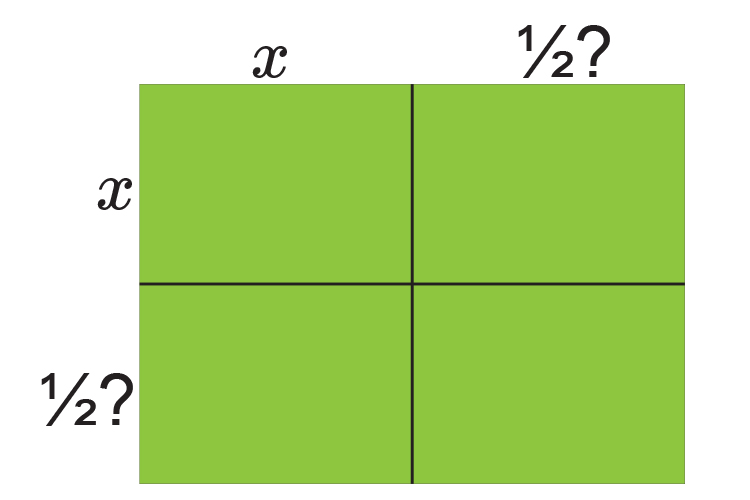
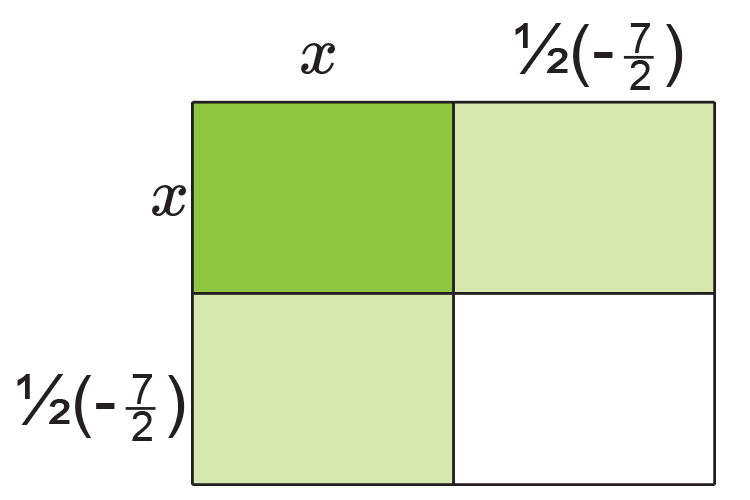
Is the same as
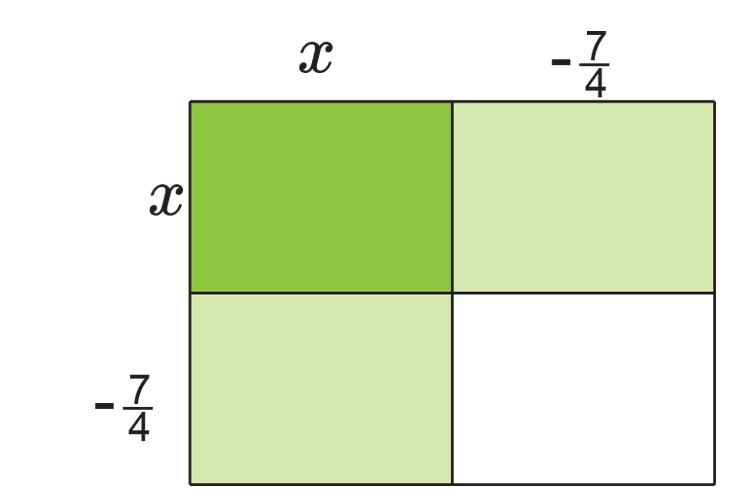
Fill in the table
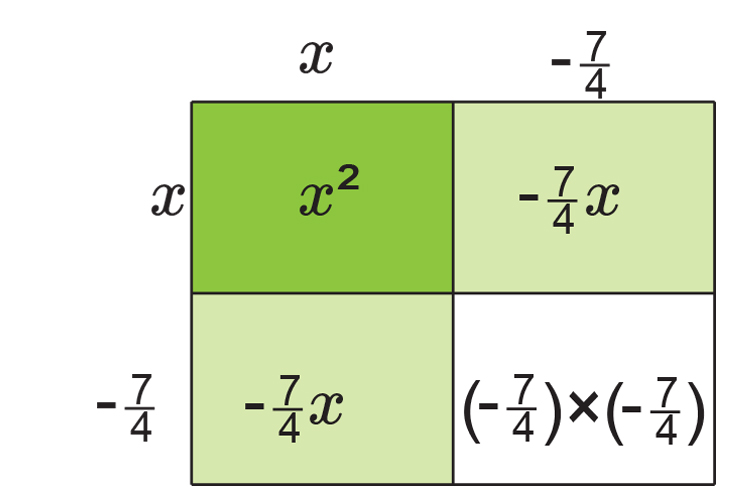
Is the same as
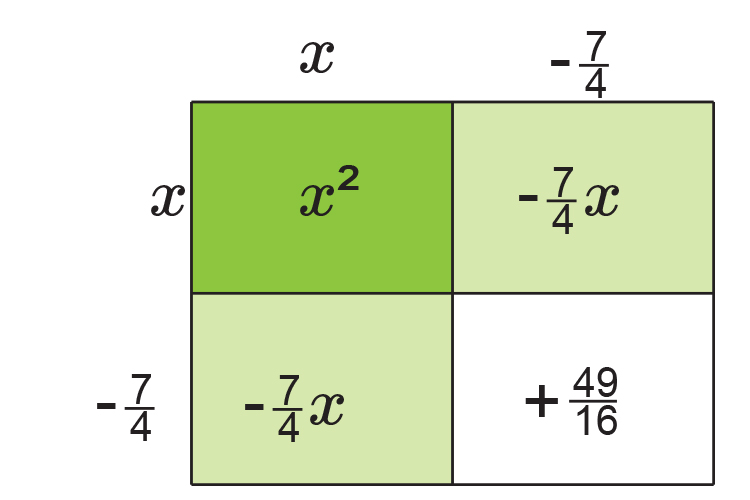
NOTE:
This is the same as `(x-7/4)^2`
If you add up each area we get:
`x^2-7/4x-7/4x+49/16`
`x^2-2times7/4x+49/16`
`x^2-7/2x+49/16`
`x^2-7/2x+3\1/16`
Originally we had `x^2-7/2x+3=0`
We now have `x^2-7/2x+3\1/16=0`
Always plot this on a number line
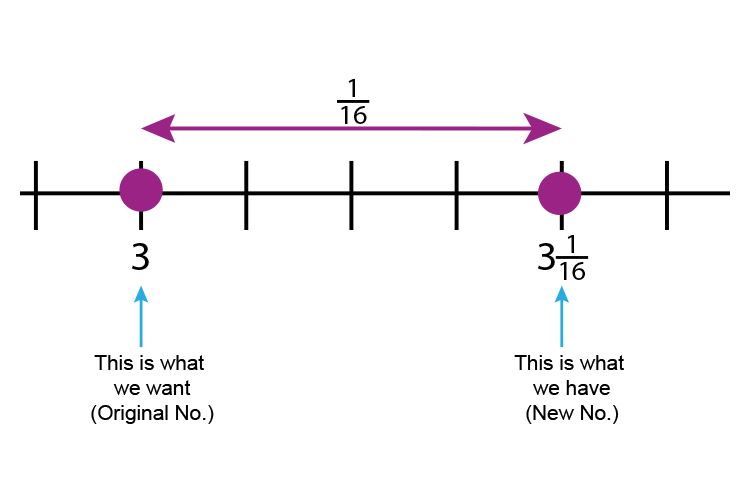
The number line will help you remember
Original `-` New number
`3-3\1/16=-1/16` (We need to `-1/16` )
So `x^2-7/2x+3=0`
Is the same as
`(x-7/4)^2-1/16=0`
`(x-7/4)^2=1/16`
`x-7/4=+-sqrt(1/16)`
(Don't forget the root of anything can be + or -)
`x-7/4=+-1/4`
`x=7/4+-1/4`
`x=7/4+1/4` or `x=7/4-1/4`
`x=8/4` or `6/4`
`x=2` or `1\1/2`
Now check
`2x^2-7x+6=0`
If `x=2` `2times2^2-7times2+6=0`
`8-14+6=0`
If `x=1\1/2` `2times(3/2)^2-7times(3/2)+6=0`
`2times(9/4)-21/2+6=0`
`18/4-21/2+6=0`
`4\2/4-10\1/2+6=0`
`4\1/2-10\1/2+6=0` Which is correct
Answer:
The roots of `2x^2-7x+6=0` are `x=2` or `x=1\1/2`




